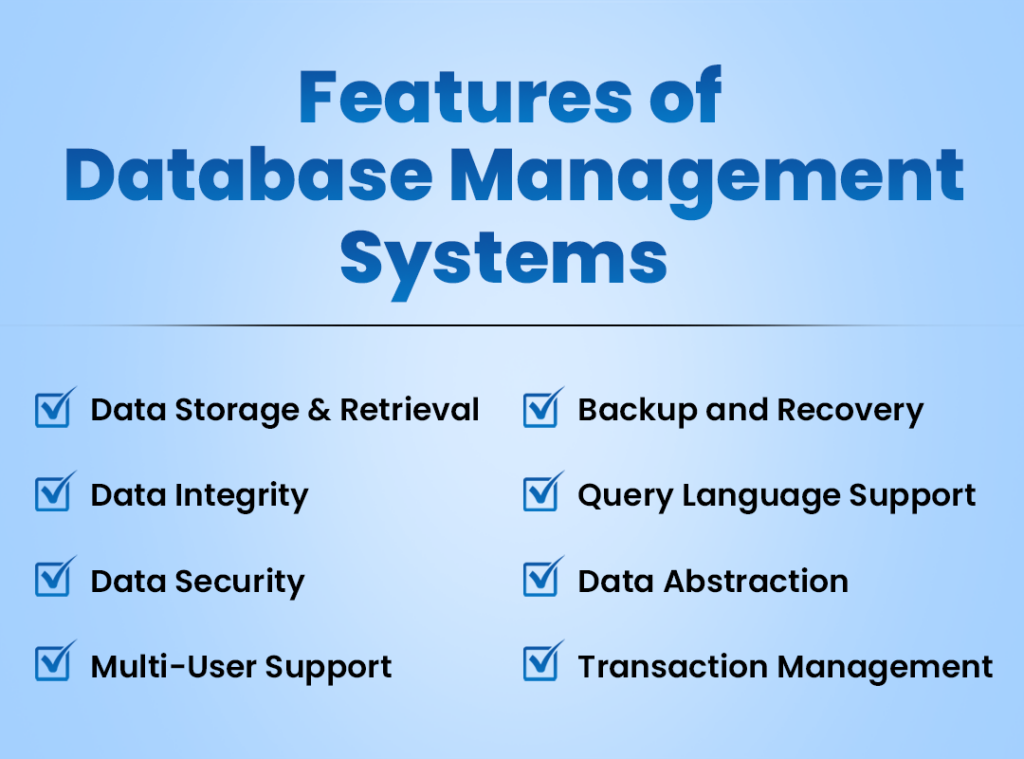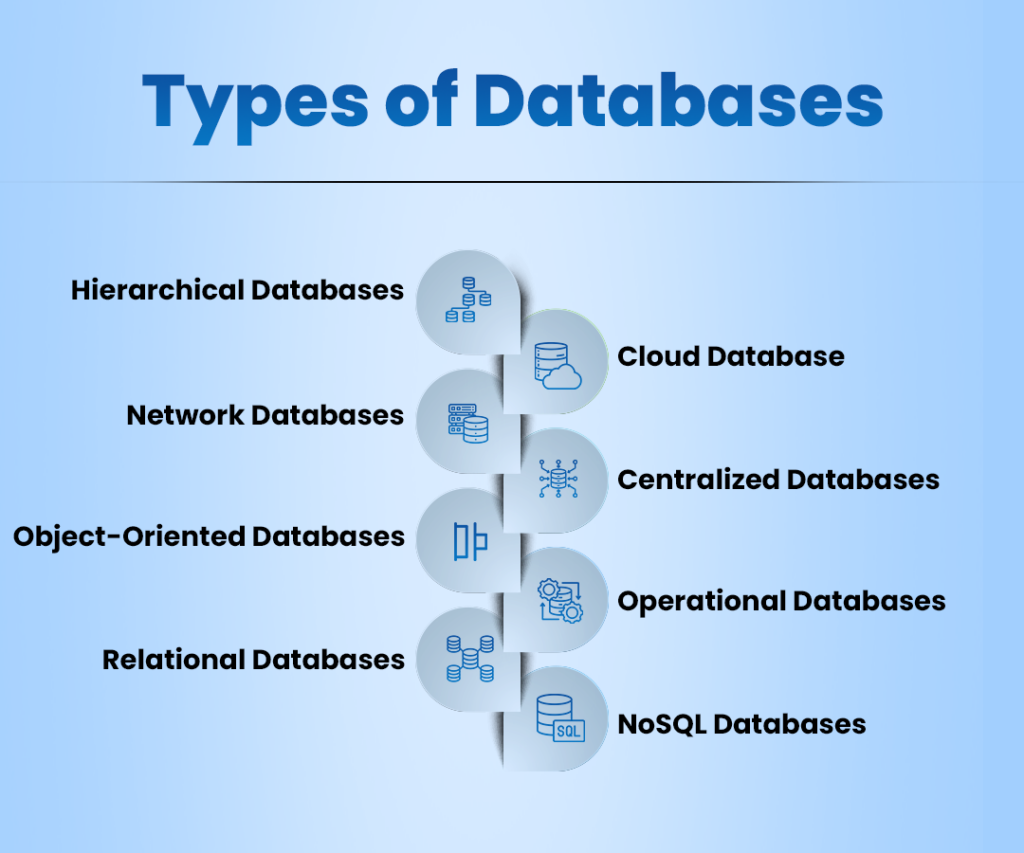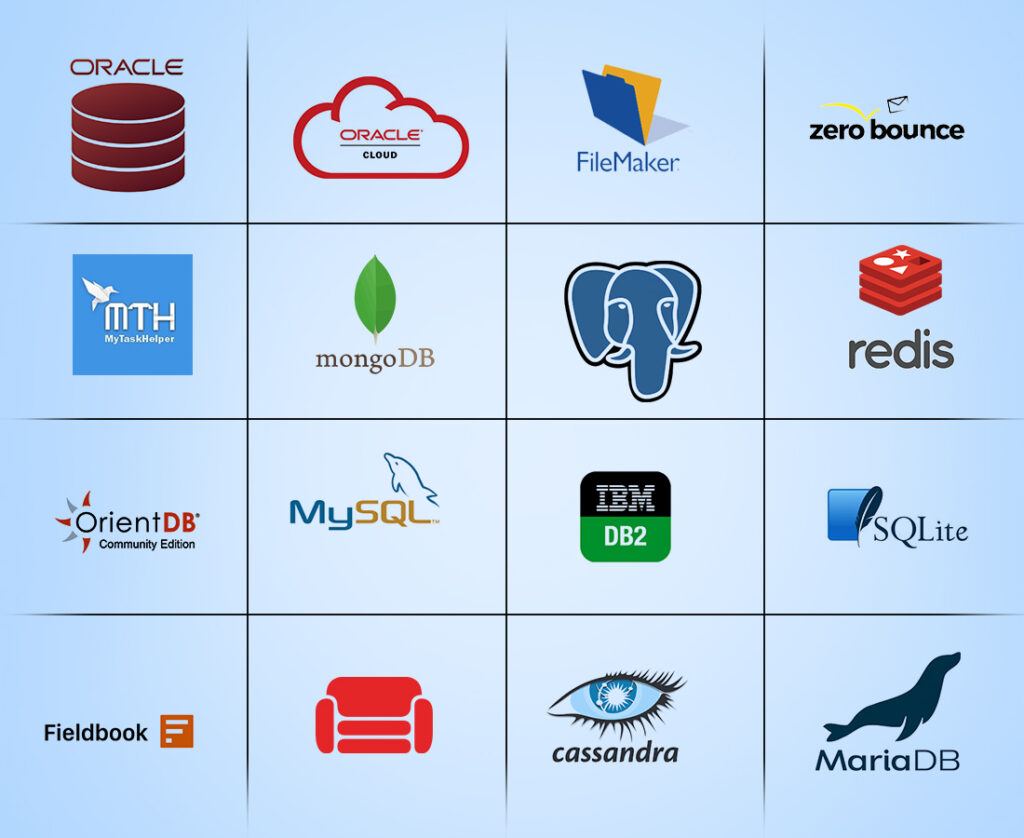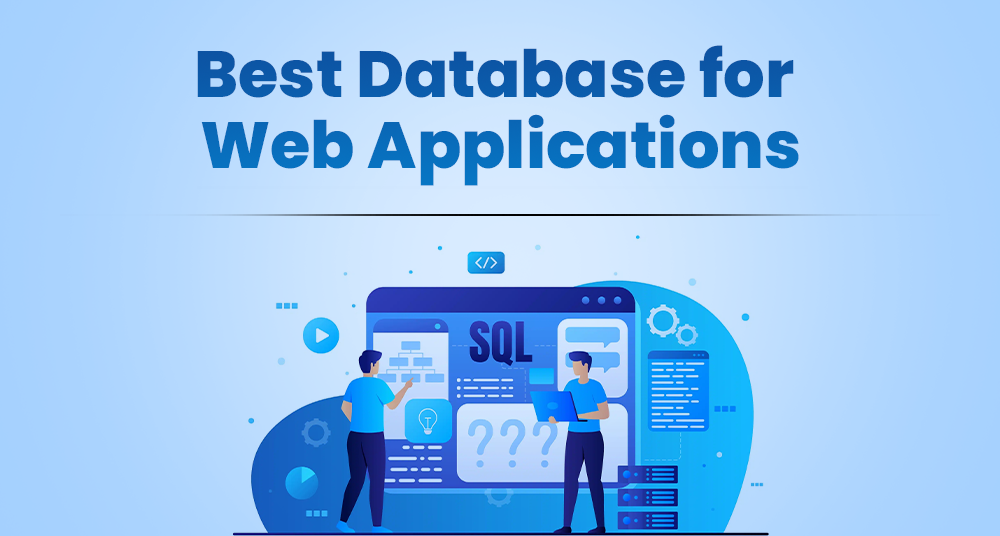Your web application may have an SEO-friendly interface, and you might think that’s all it takes for a successful website.
But that’s not the whole truth. One crucial element that plays a significant role in web development is the database. It is essential for storage, security, and much more.
In this basic guide, we’ll delve into Database Management Systems (DBMS), exploring the various types of databases, how they function, and some of the most popular database names in the industry. Understanding these components is vital for building a robust web application that meets both user and business needs.
What is Database Management System (DBMS)?
Database Management Systems (DBMS) are software applications designed to store, retrieve, and manage data efficiently. They enable users to run complex queries, ensuring data integrity and security. With various types of DBMS available, organizations can choose the best solution to meet their specific data storage and management needs.
Essential Features of Database Management Systems (DBMS)

Data Storage and Retrieval
DBMS efficiently stores vast amounts of data and provides mechanisms to retrieve it quickly. This ensures that users can access required information with minimal delay, enhancing performance.
Data Integrity
DBMS enforces data integrity through constraints, ensuring that only valid data is entered. This prevents errors and maintains the accuracy and consistency of the stored information.
Data Security
DBMS includes robust security measures, such as user authentication and access controls. This protects sensitive data from unauthorized access and ensures compliance with data protection regulations.
Multi-User Support
DBMS allows various users to access and manipulate the database concurrently. This feature promotes collaboration while maintaining data integrity, enabling organizations to work efficiently without conflicts.
Backup and Recovery
DBMS provides automated backup and recovery options to protect data against loss. This feature ensures that organizations can restore their databases to a previous state in case of failure.
Query Language Support
DBMS typically supports Structured Query Language (SQL), allowing users to interact with the database easily. This enables complex queries to be executed for data manipulation and retrieval.
Data Abstraction
DBMS abstracts the complexities of data storage, providing users with a simplified view. This allows developers and users to focus on data usage rather than underlying structures.
Transaction Management
DBMS ensures reliable transaction management, supporting features like ACID properties (Atomicity, Consistency, Isolation, Durability). This guarantees that all database transactions are processed reliably and securely.
Types of Databases: Choosing the Right One for Your Web Project

1. Hierarchical Databases
Hierarchical databases organize data in a tree-like structure, with parent-child connections. This model is efficient for simple data storage but can become complex with many relationships.
2. Network Databases
Network databases use a graph structure to allow multiple relationships among data. This model enables more flexible connections but requires more complex management than hierarchical databases.
3. Object-Oriented Databases
Object-oriented databases store data as objects, similar to object-oriented programming. This allows for complex data types and relationships, making them suitable for applications needing rich data representation.
4. Relational Databases
Relational databases arrange data into tables with rows and columns. They use Structured Query Language (SQL) for data manipulation, ensuring data integrity and supporting complex queries.
5. Cloud Database
Cloud databases store data on remote servers accessed via the internet. They offer scalability, flexibility, and cost-effectiveness, allowing businesses to manage their data without maintaining physical hardware.
6. Centralized Databases
Centralized databases store all data in a single location, allowing easy access and management. This model simplifies data control but can become a single point of failure.
7. Operational Databases
Operational databases manage real-time data used in day-to-day operations. They support transaction processing and are designed for high availability, ensuring quick access and updates for users.
8. NoSQL Databases
NoSQL databases are designed for unstructured and semi-structured data. They offer flexibility and scalability, making them suitable for big data applications and projects requiring fast, dynamic data storage.
The Best Database Names: Your Go-To List

Oracle Database
Oracle Database is a robust, enterprise-grade relational database management system known for high scalability, security, and performance. It supports a wide range of workloads, including OLTP and data warehousing.
Oracle Cloud Infrastructure
OCI offers cloud-based database solutions with Oracle’s advanced technology. It supports hybrid cloud deployments, AI, and machine learning capabilities for faster insights.
FileMaker
FileMaker is a low-code cross-platform that allows you to build custom databases and apps for your business needs. It’s ideal for managing everything from projects to inventory.
ZeroBounce
ZeroBounce is primarily an email validation service but includes features for managing email databases and ensuring accuracy. Improve your communication outreach by maintaining clean data.
Fieldbook
Fieldbook is a simple, spreadsheet-based database tool that helps you track projects, manage contacts, and organize data with ease. Perfect for small teams needing simple organization.
MyTaskHelper
MyTaskHelper allows users to create and manage web databases with ease. It’s a powerful tool for form building, data management, and automation, suitable for small businesses.
MongoDB
MongoDB is a NoSQL database that handles large volumes of unstructured data. It’s popular for building modern applications due to its flexibility and scalability.
PostgreSQL
PostgreSQL is an advanced open-source object-relational database system known for its advanced features, extensibility, and support for custom data types. It excels in complex applications.
Redis
Redis is an in-memory data store used as a database, cache, and message broker. It’s ideal for applications requiring fast, real-time data access.
CouchDB
CouchDB is a NoSQL database that uses JSON to locate data. It’s ideal for web and mobile applications, offering easy replication and offline-first functionality.
OrientDB
OrientDB is a multi-model NoSQL database written in Java that supports both graph and document-based data models. It is highly scalable, making it great for complex data relations.
MySQL
MySQL is a widely used open-source relational database system that powers many web applications. Known for its reliability, flexibility, and ease of use.
IBM DB2
IBM DB2 is an enterprise-level relational database system offering high availability, scalability, and integration with AI to deliver deep insights across your data.
SQLite
SQLite is a lightweight, serverless, self-contained SQL database engine written in C programming language. It’s perfect for embedded applications and devices with limited resources.
Apache Cassandra
Cassandra is a distributed NoSQL database that excels in handling large amounts of data across many servers without any single point of failure.
MariaDB
MariaDB is a fork of MySQL, developed for improved performance and security. It offers both relational and hybrid cloud solutions, ideal for modern app development.
Ending Lines: Top Database for Web Applications
In this blog, we’ve explored the critical role of databases in web application development. Databases are essential for storing, managing, and retrieving data efficiently, making them a backbone for any modern web app. We covered different types of databases, including relational (like MySQL and PostgreSQL) and NoSQL (such as MongoDB and Redis), highlighting their strengths and best use cases. We also listed some of the top databases to consider for building a web application, depending on your specific needs, scalability requirements, and data structure preferences. Choosing the right database is crucial for performance and overall project success.






What do you think?
It is nice to know your opinion. Leave a comment.